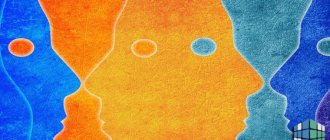How to develop creativity - tips
Change conventional thinking to non-standard thinking
We often live and think in automatic mode. It's more convenient, isn't it? We hesitate to leave our comfort zone and look at things around us from a creative point of view.
After all, a chair is needed to sit. But who said that only for this? Non-standard thinking plays an important role in the development of creativity. Try to destroy stereotypes. Improvise!
Curiosity is not a vice
There is no creativity without curiosity. This quality helps the birth of new impressions, ideas and research.
Write down ideas
Let you always have a notebook at hand to write down any thoughts that arise. Much does not remain in memory. But you can always return to what you wrote and use the idea at the right time. Never throw away ideas born with the thought: “This is stupid!” Any thought has the right to exist.
Find your source of inspiration
It could be a painting, a song, a book, a poem, a film. The world offers ideas that can be used as the basis for creating your own plans. Just don't confuse inspiration with plagiarism.
Obstacles are your motivation
Do not confuse “difficult” and “impossible”. If you want to learn creativity, then eliminate the word “impossible.” Yes, it can be complicated and difficult. When faced with an obstacle, focus on solving the problem. Overcoming the discomfort and negative feelings that arise becomes a good source of inspiration.
The vast majority of inventions created to improve comfort were created by those who wanted to overcome inconvenience.
Create big ideas yourself
It’s so easy to enter the desired phrase into a search engine and confidently expect a list of answers to the question to appear. Yes, such inspiration from others is valuable. But if you want to develop creative thinking, then try to come up with ideas on your own.
If the muse doesn't come...
If no meaningful thoughts come into your head for a long time, take a break. Take a shower, drink coffee or go for a walk. Sometimes the most creative ideas come to mind at unexpected times.
Creativity from a psychological perspective
This phenomenon is mental, and psychology has been studying it successfully for a long time. Let's start with the fact that the concept of “creativity” can be literally translated by the somewhat clumsy Russian word “creativity”. But creativity, although related to creativity, is not synonymous with it.
Creativity is usually understood as a special type of activity aimed at creating something new: new things, ideas, methods of activity, etc. The term “creativity” was introduced by the famous psychologist and creativity researcher J. Guilford in the 50s of the 20th century. He united under this concept the qualities of a person that provide a person with the opportunity to create something new, original, and non-standard.
Creativity and creativity: what is their difference
In short, creativity is a special type of activity, and creativity is the ability to perform this activity. Moreover, not only a certain internal potential and willingness to create, but also a set of mental qualities that ensure external activity, determination, determination, and the need for creative activity.
Therefore, not all people with high creative potential can be classified as creatives, but only those who are active enough to bring their ideas to life, organize and lead projects, and defend their point of view.
Creativity includes not only personality traits directly related to the creative process, but also features that provide a person with a high level of activity: self-confidence, high self-esteem and a positive attitude.
Creativity and Intelligence
Intelligence has long been considered (and is still considered) the most important quality of a professional. As an ability for mental activity, it is necessary in any field, but it is not enough for success, and even more so for creativity. For quite a long time, intelligence quotient (IQ) was the determining factor when hiring a specialist. Having a high IQ was prestigious, and this opened up wide opportunities for a person.
But by the 50s of the last century, it became clear that in those areas that require a creative approach, intellectual specialists are not always effective. Psychologists J. Guilford and E. Torrance (USA) conducted large-scale long-term studies that demonstrated that, it turns out, the ability to be creative is not directly related to the level of intelligence. And often people with a high IQ (more than 150%) turned out to be too rational for creativity, too pragmatic, calculating and... logical. But a low level of intelligence - less than 100% - also did not contribute to creativity.
To establish criteria for creativity and the connection of this quality with intelligence, J. Guilford and E. Torrance developed special tests that determine the level of creative activity and introduced the concept of “creativity quotient” (Cr), similar to IQ. As studies have shown, in which more than 150 thousand people took part, the most optimal level for creativity is a level of intelligence slightly above average. But a prerequisite for creativity is a person’s tendency to a special type of thinking, which J. Guilford called divergent - multidirectional.
How to develop creativity - exercises
Let's start training.
But first: - believe in yourself;
- stop scolding yourself! Creativity is not a secret weapon of a select few, but an ability available to everyone. You just have to want it;
- list 10 of your qualities or skills (right now











